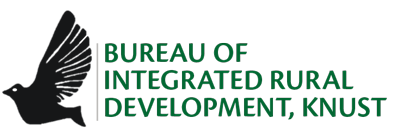There is growing evidence suggesting that accelerated demand for land, water and other natural resources, in combination with human-induced climate change, is putting an immense pressure on nature. Human activities like agriculture, industry and urbanisation are craving into natural areas, thereby putting stress on existing resources and ecosystems. To reduce the tradeoff between nature and human activities, the landscape approach is developed as a possible decision support solution for competing claims of development needs. The landscape approach promotes effective collaboration between actors from multiple sectors and various levels of government, including NGOs, CSOs, government agencies, businesses, the private sector and local communities to address pressing sustainability challenges.
Kumasi is the second largest city of Ghana. Growing evidence suggests that Kumasi and its adjoining districts (collectively called the Greater Kumasi Metropolitan Area or Kumasi landscape) is changing in very notable ways. For example, while once known as the “garden city”, urban and peri-urban expansion are rapidly encroaching into green and blue infrastructure. There is loss of biodiversity and encroachment into forest reserves and protected zones due to agricultural expansion, mining activities and urbanisation. Water resources are polluted, and water quality parameters for several water resources are far below desirable limits or excessively above acceptable limits. At the same time further challenge remains to improve mobility, traffic congestion on major roads in the city exacerbates the situation. Also many low-income and newly developing peri-urban settlements are unserved by the city's roads, social infrastructure, water and waste collection systems. This needs to change to put the landscape towards a more sustainable and inclusive path.
Already, there are different actors (government agencies, the private sector, CSOs, businesses, farmers, etc) involved in the management of blue and green infrastructure in the landscape. Given the complexity of the challenges confronting the Greater Kumasi Metropolitan Area, a collaborative and integrated landscape approach is expected to bring about synergies for achieving interconnected and multiple goals. A landscape approach will present an important step to improve shared understanding of the challenges at hand and to identify synergies that could contribute to differing ambitions of people, the planet, and profit.
Series of studies on spatial dynamics of land use change have shown declining levels of green spaces and water infrastructure and excessive pressure on these resources threatens sustainability and achieving the 2030 Sustainable Development Goals (SDGs) on food, water, climate and biodiversity. This changing nature of the Kumasi landscape also raises important questions. For example, as the world strive to achieve the SDGs, what would the Greater Kumasi Metropolitan Area look like in 2030? Why and how should green and blue infrastructure of the GKMA be conserved? What strategies will work and how should different stakeholders collaborate to conserve green and blue infrastructure? These are important questions that require multi-actor and multi-stakeholder forum to explore the challenges and strategies for inclusive development planning in the Kumasi landscape. This project is intended to map out different stakeholders and interests operating in the fields of (peri-)urban planning, agriculture, forestry and conservation in the Kumasi landscape. The goal is to identify strategies and shared stakeholder ambitions for the Kumasi landscape, which will be translated into visualised future development narratives and scenarios, in relation to the Sustainable Development Goals for food, water, climate and biodiversity by the year 2030.
Objectives
- Identify shared strategies for sustainable and inclusive development planning in Kumasi landscape
- Develop narratives and scenarios about the future of the Kumasi landscape
- Explore opportunities and constraints for strengthening landscape level platforms (and institutions for effective multi-stakeholder collaboration
- To examine roles that different actors can play and how their synergies can be harnessed collectively to conserve green and blue infrastructure in the Kumasi landscape.
Research team members:
Dr Albert Arhin
Prof Paul Sarfo-Mensah
Collaborators
PBL Netherlands Environmental Assessment Agency

